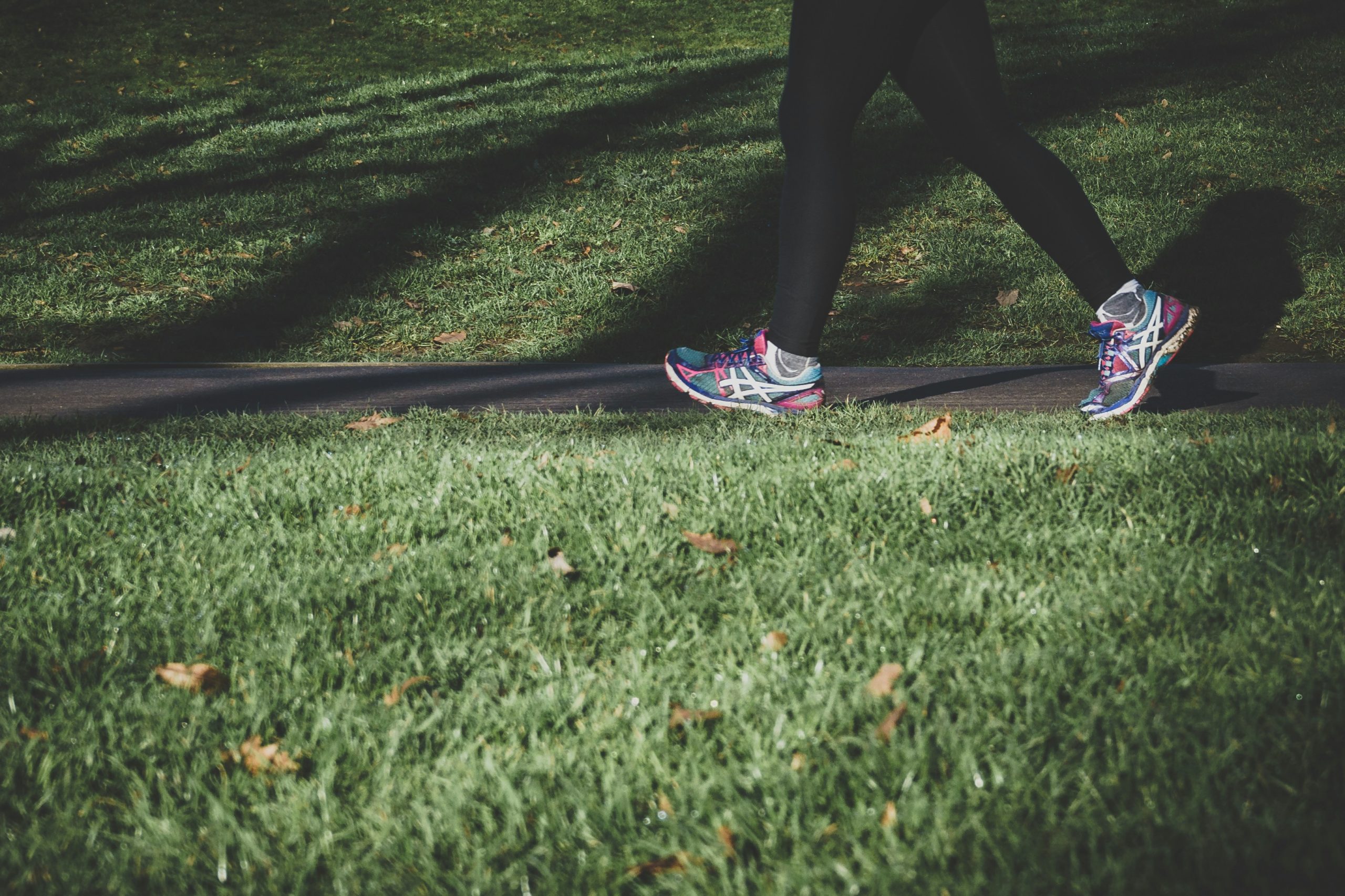If you are looking for a free, easy way to reap huge benefits for your mental and physical wellbeing, just put on a comfortable pair of trainers and step outside your door! Walking is a proven way to enhance your physical and mental wellness, and in this blog we share five health benefits of walking and some tips for doing it pain-free.
Most of the time we walk without thinking about our bodies. It’s often only when we are in pain that we notice something’s wrong. Our team can diagnose the causes of any pain during or after walking and provide expert treatment to help you get back out on the trail!
Firstly, some general facts – the UK Chief Medical Officer recommends at least 150 minutes of moderate intensity activity, or 75 minutes vigorous activity, or a combination of both, a week. That equates to just 20-30 minutes walking each day. You can start straight away – no gym membership required, just choose a trail nearby and enjoy some fresh air!
To gain the best benefit, aim to walk at a speed over 3 miles an hour – that’s a brisk walk that should raise your heart rate without leaving you out of breath. Try to lengthen your stride to really stretch and move your hips, knees and ankles.
But start slowly if you have a health condition and, as always, check in with your GP if you’re planning a new exercise programme. Book in with our osteopath team for specialist advice and assessment if you are worried about injury.
1. Walking is great for joint health
Because the cartilage tissue that lines the surfaces of joints has a poor blood supply, it can take longer to recover from damage. Cartilage around joints takes most of its nutrition from the synovial fluid around it, and this fluid circulates when we are in motion. When we walk, pressure is applied at intervals to our joints which promotes the circulation of the fluid around them. This nourishes the supportive cartilage and improves joint health.
2. Walking is great for mental health
Walking is a low intensity sport, so while it doesn’t offer anything like a ‘runner’s high’ (the release of endorphins) it does support the release of growth hormones that support nerve development. It is also shown to increase the size of the hippocampus, the centre of emotional regulation. So it’s great for brain health!
Walking with friends can offer social interaction, especially if you usually live or work alone. Walking alone can be a chance for a quiet time in your day, perhaps combined with mindfulness techniques. Many studies have shown that walking has a positive effect on stress, anxiety, and depression.
3. Walking boosts immune function
Walking can even support your immunity. A 2010 study of over 1,000 men and women found that those who walked at least 20 minutes a day, at least 5 days a week, had 43% fewer sick days than those who exercised once a week or less. If they did fall ill, their symptoms were milder and shorter in duration.
4. Walking improves bone density
Wolff’s Law states that ‘Bone grows in response to the stresses and strains that are placed upon it’. As a weight-bearing form of exercise, walking can be an effective element of a bone health protocol. To boost its benefits, walk on uneven surfaces or up hills to increase the load on the muscles that support the skeleton. One study of post-menopausal women found that 30 minutes of walking each day reduced their risk of hip fractures by 40%.
5. Walking boosts cardovascular fitness
Walking is great for heart health. As a form of aerobic exercise, lowers your resting blood pressure and heart rate, as well as supporting you to maintain a healthy weight.
Check your alignment for pain-free walking
If walking is painful for you, or you experience pain after walking, it could be down to poor alignment in your pelvis. A study of 120 people suggested that 85% of males and 75% of females presented with an anterior pelvic tilt. That’s the medical term for a misaligned pelvis.
In other words, 8 out of 10 people have a misaligned pelvis. When this happens, stress can be unevenly focused on one hip or knee, which can lead to repetitive strain and in some cases even arthritis or stress fractures.
Pelvis misalignment can happen for a number of reasons. One reason is a difference in leg length.
Many of us have slight leg length differences and it doesn’t cause any problems. Yet for some this difference leads to an adaptation response. The body tries to correct the misalignment, placing more pressure on some areas rather than others. Over time this can cause muscle imbalance and poor posture.
Women are particularly prone to pelvic misalignment because their pelvises are generally larger and more mobile. In pregnancy, this can cause problems when the strong sacro-iliac ligaments grow lax as the ‘relaxin’ hormone is released to facilitate birth.
Symptoms of pelvic imbalance include:
- Pain around hips, pelvis or lower back
- Increased pain during, or after walking
- Pain after standing still for a while
- One hip higher than the other
- Excessive pointing outwards of feet
- Preference to lean on one hip/cross one leg over other/sit with
The good news is that osteopaths are experts at realigning the body! We can accurately diagnose and treat pelvic misalignment.
Book your appointment now
Thinking of getting your walking shoes on? Our team of osteopaths are expert at diagnosing and treating any injuries that might be holding you back. We also offer help and advice about building up slowly and adopting exercise to support a healthy and comfortable gait.
It couldn’t be easier to book your appointment with Osteo & Physio! Book a session via our app, website or call our friendly reception team on 0345 5577788.

